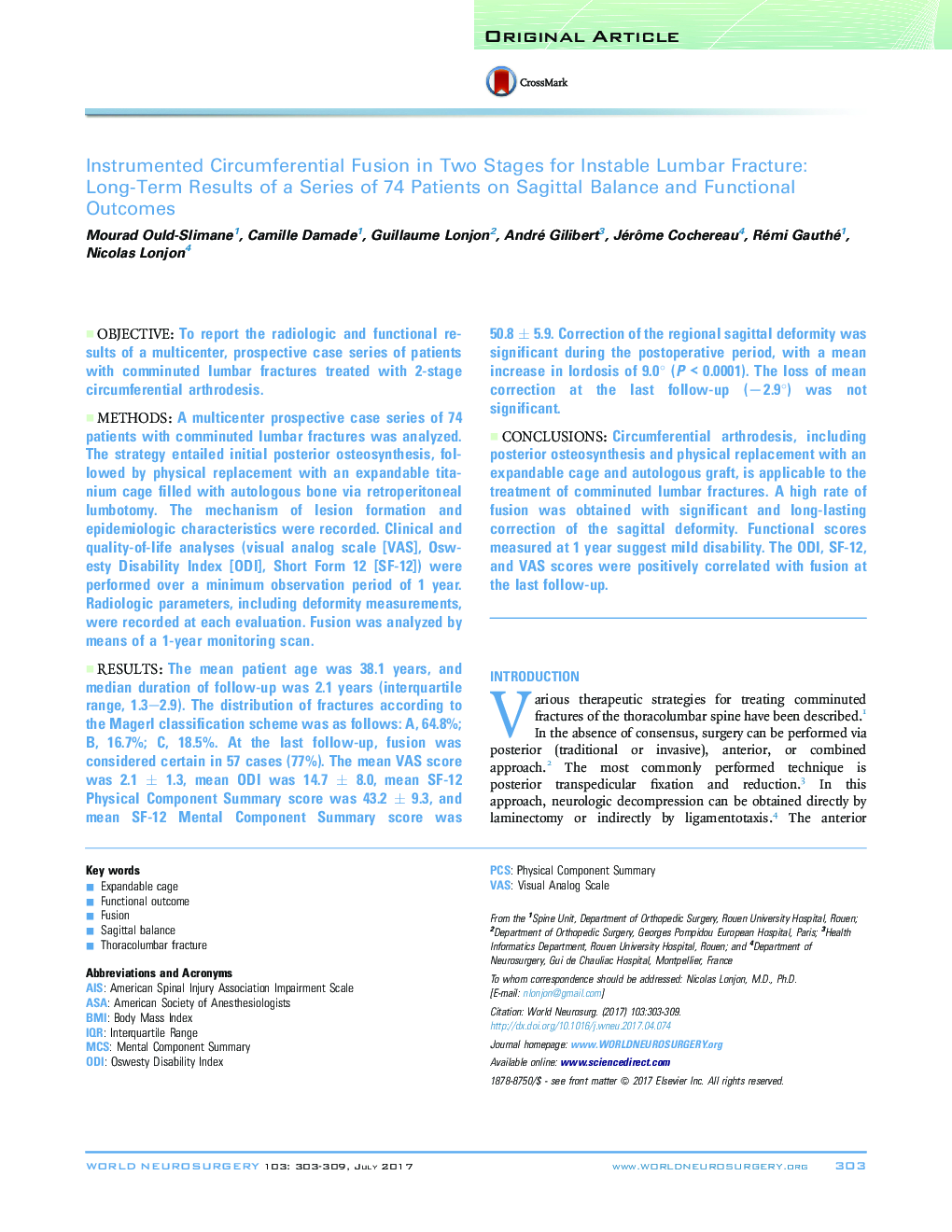| Article ID | Journal | Published Year | Pages | File Type |
|---|---|---|---|---|
| 5634309 | World Neurosurgery | 2017 | 7 Pages |
ObjectiveTo report the radiologic and functional results of a multicenter, prospective case series of patients with comminuted lumbar fractures treated with 2-stage circumferential arthrodesis.MethodsA multicenter prospective case series of 74 patients with comminuted lumbar fractures was analyzed. The strategy entailed initial posterior osteosynthesis, followed by physical replacement with an expandable titanium cage filled with autologous bone via retroperitoneal lumbotomy. The mechanism of lesion formation and epidemiologic characteristics were recorded. Clinical and quality-of-life analyses (visual analog scale [VAS], Oswesty Disability Index [ODI], Short Form 12 [SF-12]) were performed over a minimum observation period of 1 year. Radiologic parameters, including deformity measurements, were recorded at each evaluation. Fusion was analyzed by means of a 1-year monitoring scan.ResultsThe mean patient age was 38.1 years, and median duration of follow-up was 2.1 years (interquartile range, 1.3-2.9). The distribution of fractures according to the Magerl classification scheme was as follows: A, 64.8%; B, 16.7%; C, 18.5%. At the last follow-up, fusion was considered certain in 57 cases (77%). The mean VAS score was 2.1 ± 1.3, mean ODI was 14.7 ± 8.0, mean SF-12 Physical Component Summary score was 43.2 ± 9.3, and mean SF-12 Mental Component Summary score was 50.8 ± 5.9. Correction of the regional sagittal deformity was significant during the postoperative period, with a mean increase in lordosis of 9.0° (P < 0.0001). The loss of mean correction at the last follow-up (â2.9°) was not significant.ConclusionsCircumferential arthrodesis, including posterior osteosynthesis and physical replacement with an expandable cage and autologous graft, is applicable to the treatment of comminuted lumbar fractures. A high rate of fusion was obtained with significant and long-lasting correction of the sagittal deformity. Functional scores measured at 1 year suggest mild disability. The ODI, SF-12, and VAS scores were positively correlated with fusion at the last follow-up.
